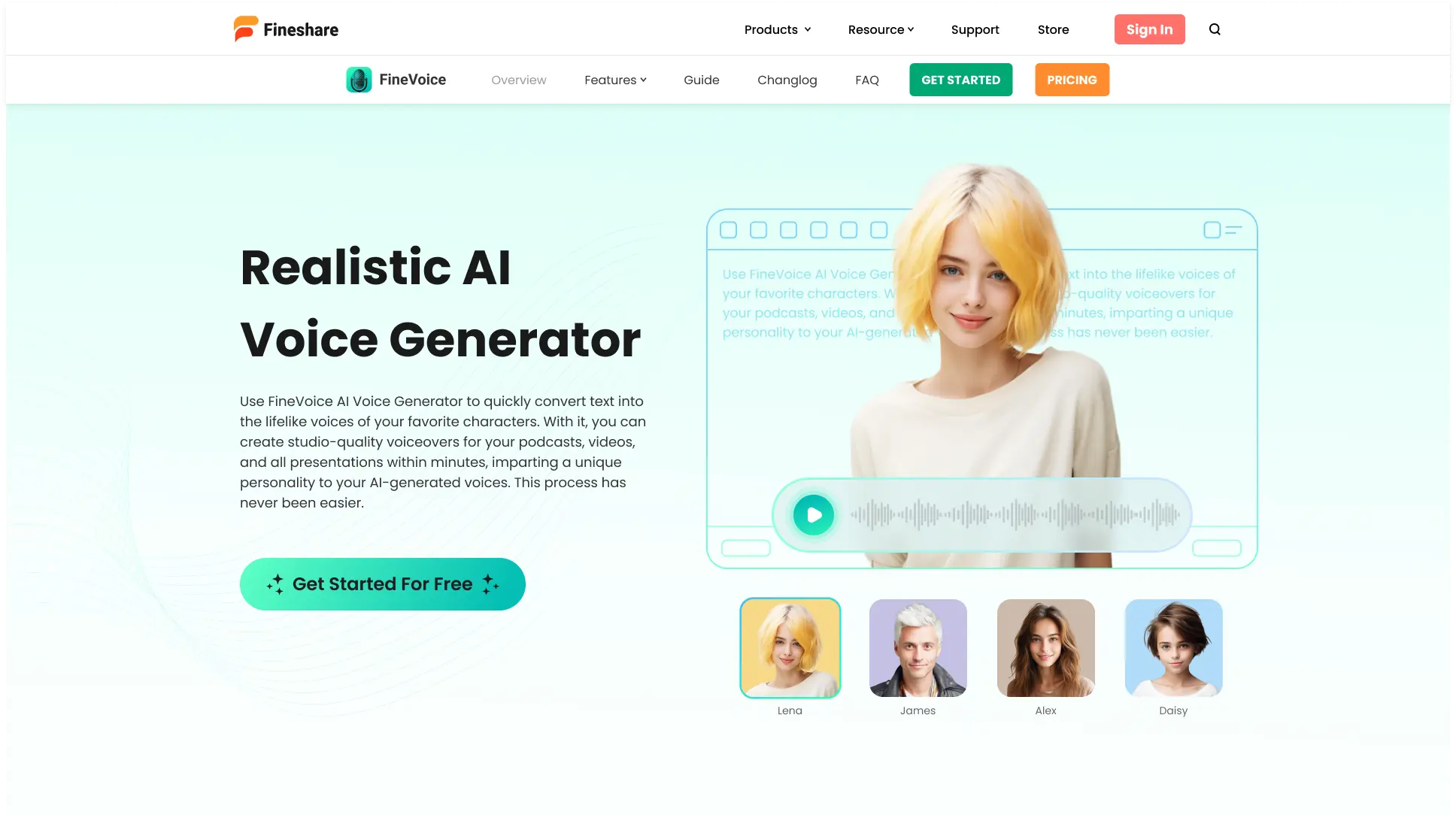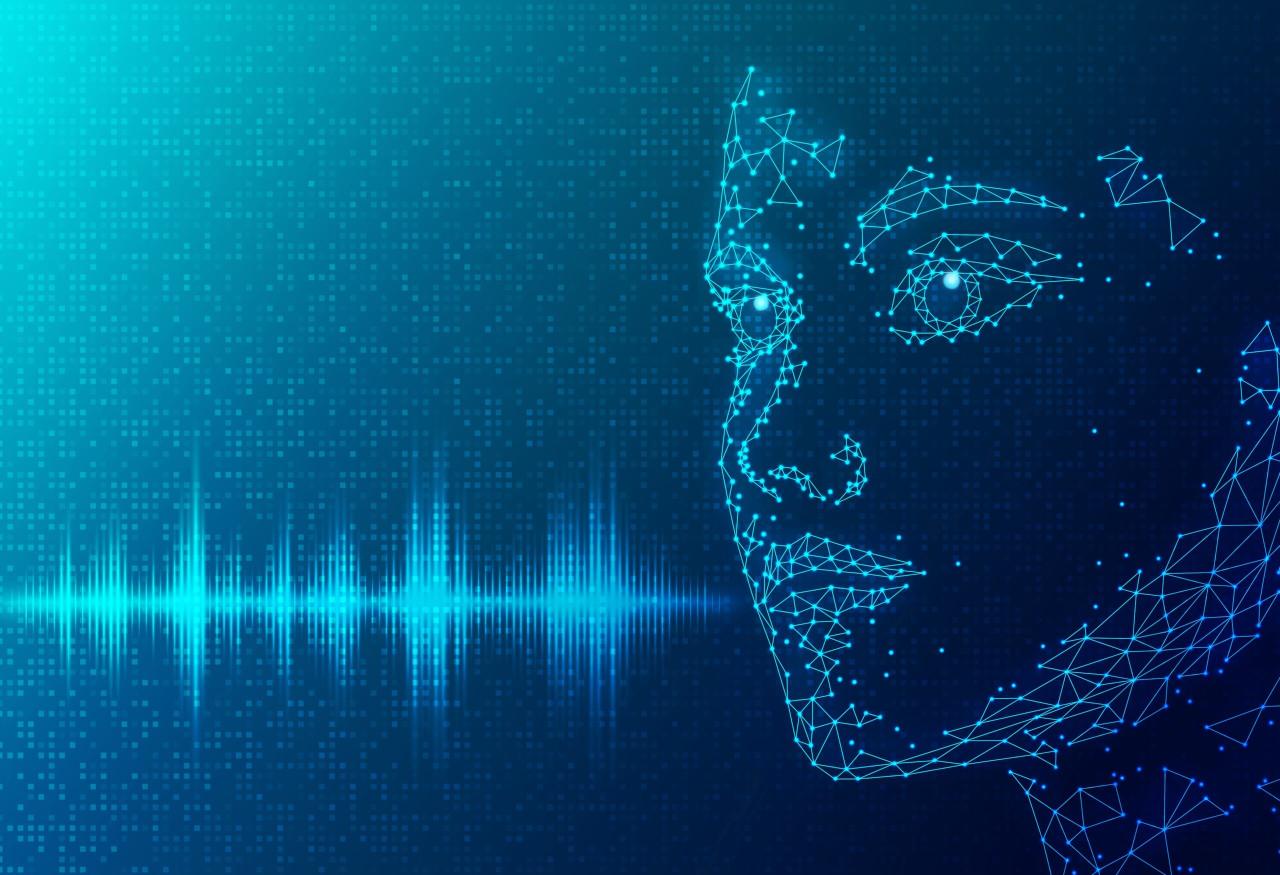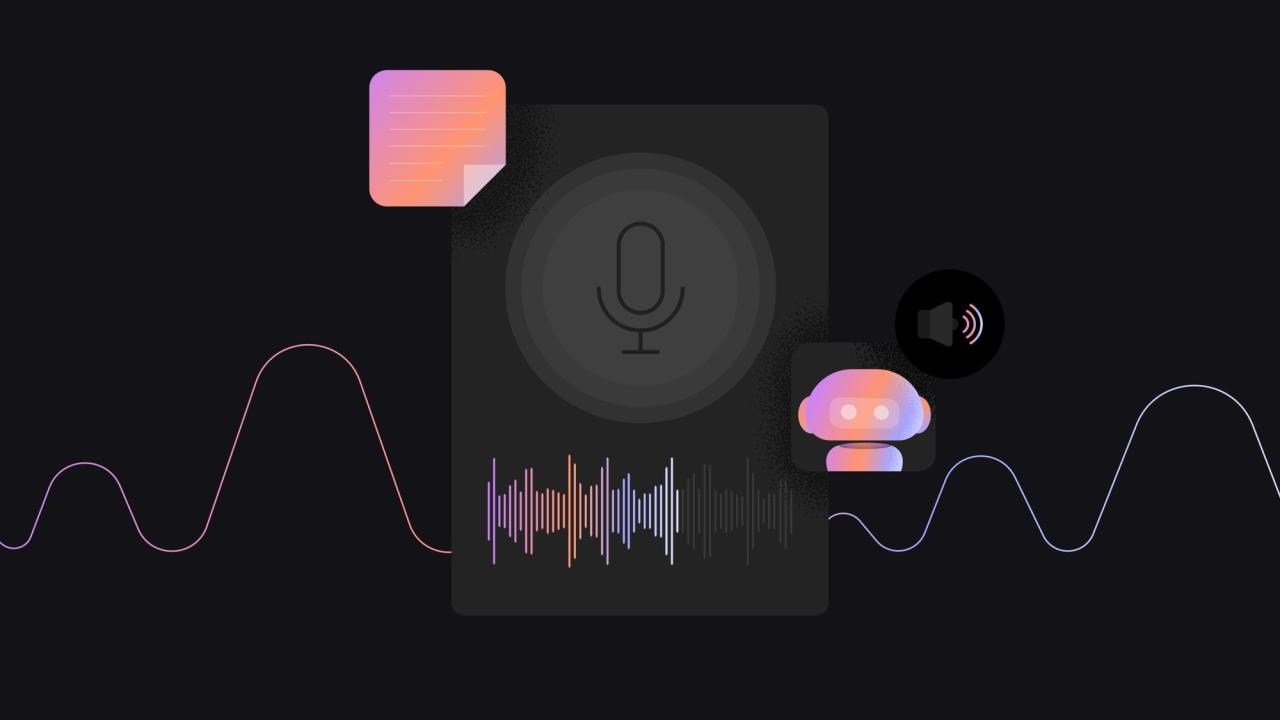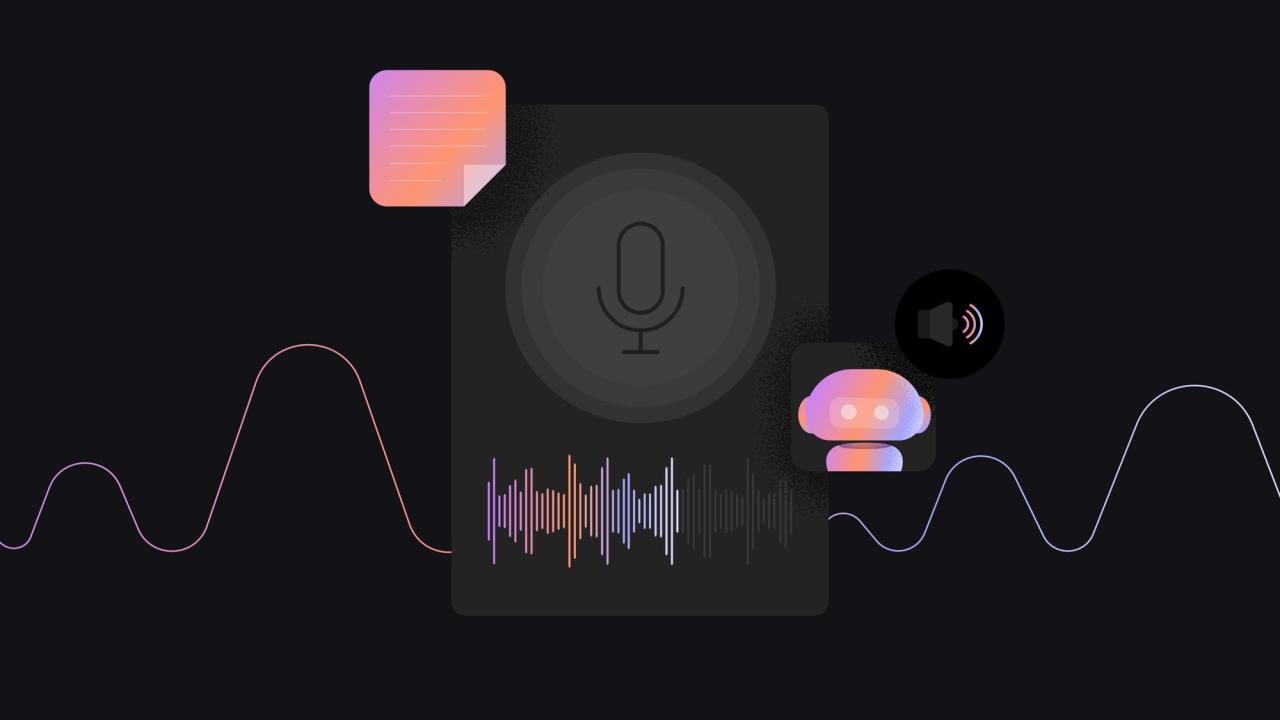AI voice generators are revolutionizing how we interact with technology. From realistic video game characters to personalized learning experiences, these tools leverage deep learning and neural networks to create incredibly lifelike speech. This exploration delves into the technology behind these amazing tools, their diverse applications, and the ethical considerations surrounding their use.
We’ll cover the evolution of AI voice generation, comparing different types like text-to-speech and voice cloning. We’ll examine real-world applications across various industries, from gaming and accessibility to marketing and beyond. Finally, we’ll discuss the ethical implications and future trends shaping this rapidly evolving field.
AI Voice Generators: A Comprehensive Overview
AI voice generators have rapidly evolved from robotic-sounding speech to remarkably human-like voices, transforming various industries. This evolution is fueled by advancements in deep learning and neural networks, leading to more natural and expressive synthetic speech.
Evolution of AI Voice Generation Technology
Early AI voice generators relied on concatenative synthesis, stitching together pre-recorded speech segments. This approach had limitations in terms of naturalness and flexibility. The advent of deep learning, particularly recurrent neural networks (RNNs) and more recently, transformer networks, revolutionized the field. These models learn complex patterns in speech data, allowing for the generation of highly natural-sounding voices that can adapt to different contexts and styles.
AI voice generators are pretty cool, right? Want to learn how to build the tech behind them? Check out these awesome IT courses to get started with programming and AI. Mastering the fundamentals will help you create your own amazing AI voice generator applications and beyond!
Core Technologies Behind AI Voice Generation
Deep learning, specifically neural networks, forms the backbone of modern AI voice generation. Convolutional Neural Networks (CNNs) excel at processing the raw audio waveform, while Recurrent Neural Networks (RNNs), particularly Long Short-Term Memory (LSTM) networks and Gated Recurrent Units (GRUs), are adept at modeling the sequential nature of speech. Transformer networks, like those used in models such as WaveNet and Tacotron, have further improved the quality and efficiency of AI voice generation by enabling parallel processing of input data.
AI voice generators are pretty cool, letting you create realistic speech for all sorts of projects. It’s a bit like how the Canucks’ goalie situation changed unexpectedly; check out this news about the team placing star forward Pettersson on injured reserve and recalling Silovs: Canucks place star F Pettersson on retroactive IR, recall G Silovs. Just like that news is unexpected, you can use AI to generate surprisingly natural-sounding voices, even for unexpected scenarios.
Comparison of AI Voice Generator Types
Two primary types of AI voice generators exist: text-to-speech (TTS) and voice cloning. TTS systems convert written text into speech, while voice cloning creates synthetic voices that mimic a specific person’s voice using a sample of their speech. Both utilize similar underlying technologies but differ in their training data and application.
Comparison of Popular AI Voice Generators

| Feature | Google Cloud Text-to-Speech | Amazon Polly | Microsoft Azure Text-to-Speech |
|---|---|---|---|
| Naturalness | High | High | High |
| Voice Options | Many, with various languages and accents | Many, with various languages and accents | Many, with various languages and accents |
| Customization | SSML support for advanced customization | SSML support for advanced customization | SSML support for advanced customization |
| Cost | Pay-as-you-go pricing | Pay-as-you-go pricing | Pay-as-you-go pricing |
Applications of AI Voice Generators
AI voice generators are finding applications across diverse industries, improving efficiency, accessibility, and user experience.
AI Voice Generators in Gaming
AI voice generators are used extensively in video games to create realistic and dynamic dialogue, non-player character (NPC) voices, and ambient soundscapes. This allows for more immersive and engaging gameplay experiences, especially in large-scale games with many characters.
AI Voice Generators in Accessibility Tools
For visually impaired individuals, AI voice generators are crucial components of screen readers and other accessibility tools. They transform digital text into audible speech, enabling access to information and online services.
AI Voice Generators in Personalized Learning
AI voice generators personalize learning experiences by providing customized feedback, generating interactive narratives, and creating adaptive learning materials. They can adjust their speech patterns and content based on individual learner needs and progress.
AI Voice Generators in Marketing and Advertising
AI voice generators are used to create personalized voice messages for marketing campaigns, interactive voice response (IVR) systems, and voice-activated advertisements. They enable businesses to connect with customers in a more engaging and personal way.
Innovative Applications of AI Voice Generators
- Creating realistic audiobooks and podcasts
- Generating personalized greetings and announcements
- Developing virtual assistants and chatbots with natural-sounding voices
- Producing synthetic voices for characters in animated films and television shows
- Assisting in language learning through interactive voice exercises
Technical Aspects of AI Voice Generation
Creating high-quality AI voice generators involves complex processes and significant computational resources.
Training an AI Voice Generator Model
Training an AI voice generator model typically involves feeding a massive dataset of speech recordings to a neural network. This data must be meticulously cleaned and processed to ensure high quality. The model learns the intricate relationships between text and speech, enabling it to generate new speech samples based on input text. This process can take days or even weeks depending on the size of the dataset and the complexity of the model.
Challenges in Generating Natural-Sounding Voices
Generating truly natural-sounding voices remains a significant challenge. Issues such as prosody (intonation, rhythm, stress), emotional expression, and the handling of nuances in language still require significant improvement. The model’s ability to capture subtle variations in speech patterns and contextual information is critical for achieving high levels of naturalness.
Controlling Voice Parameters
Various parameters can be controlled to fine-tune the generated voice, including pitch, tone, speed, and emotion. This allows for the creation of diverse voices suited to different applications. Techniques such as using Speech Synthesis Markup Language (SSML) provide a means to specify these parameters.
Voice Synthesis Techniques
Several techniques are used for voice synthesis, including concatenative synthesis, formant synthesis, and neural network-based synthesis. Neural network-based methods currently dominate due to their superior ability to generate high-quality, natural-sounding speech.
Flowchart for Speech Generation from Text
A simplified flowchart would show the following steps: Text Input -> Text Preprocessing (cleaning, punctuation handling) -> Acoustic Feature Extraction -> Neural Network Processing -> Waveform Generation -> Audio Output.
Ethical Considerations and Future Trends
The powerful capabilities of AI voice generators necessitate careful consideration of ethical implications and potential future developments.
Potential Misuse of AI Voice Generation Technology
The potential for misuse, particularly in creating deepfakes – realistic but fake audio recordings – is a major concern. These deepfakes could be used for malicious purposes, such as spreading misinformation or impersonating individuals.
Ethical Concerns Surrounding Voice Cloning and Privacy, Ai voice generator
Voice cloning raises ethical concerns about privacy and consent. The unauthorized use of someone’s voice could lead to identity theft, fraud, or reputational damage. Clear guidelines and regulations are needed to protect individuals’ voices.
Impact of AI Voice Generators on Employment
The widespread adoption of AI voice generators may impact employment in fields such as voice acting and transcription. However, it may also create new opportunities in areas such as AI development and voice engineering.
Predictions for Future Development
Future developments are likely to focus on improving the naturalness, expressiveness, and emotional range of synthetic voices. We can expect more personalized and customizable voices, as well as increased integration with other AI technologies.
AI voice generators are pretty cool; you can make a robot sound like anyone! Imagine using one to announce sports news, like this: Check out the news that the O’s agree to 1-year deal with veteran SP Charlie Morton , then have the AI narrate the game highlights. Pretty neat, right? The possibilities with AI voice technology are endless.
Potential Benefits and Risks of Widespread Adoption

| Aspect | Benefits | Risks |
|---|---|---|
| Accessibility | Improved access to information for visually impaired individuals | Potential for misuse in creating deceptive content |
| Personalization | Enhanced user experience through customized interactions | Concerns about privacy and data security |
| Efficiency | Increased productivity in various industries | Potential job displacement in certain sectors |
Illustrative Examples of AI Voice Generation: Ai Voice Generator
Several real-world examples highlight the capabilities and impact of AI voice generation.
AI Voice Generator in Podcast Production
Imagine a podcast using an AI voice generator to narrate a historical account. The voice, trained on a dataset of professional narrators, possesses a warm, authoritative tone, enhancing the listener’s immersion. The use of AI allows for rapid production, consistent voice quality, and cost-effectiveness compared to hiring a human narrator.
AI Voice Generator in a Virtual Assistant
Consider a virtual assistant like Amazon Alexa or Google Assistant. The AI voice generator behind these systems provides a natural and engaging conversational experience. It seamlessly integrates speech recognition and natural language processing to understand user requests and provide appropriate responses. The user experience is improved by the natural and clear articulation of the AI voice, making interactions feel intuitive and less robotic.
AI Voice Generator for Personalized Greetings

A website might use an AI voice generator to create personalized greetings for returning users. By incorporating the user’s name and other relevant information, the greeting sounds unique and welcoming, fostering a stronger sense of connection and loyalty. This personalization can be easily implemented and scaled, leading to a significant improvement in user engagement.
Closing Summary
AI voice generators represent a powerful and rapidly advancing technology with the potential to transform numerous aspects of our lives. While ethical considerations and potential misuse need careful attention, the innovative applications and accessibility improvements offered by this technology are undeniable. As AI voice generation continues to evolve, we can expect even more sophisticated and impactful uses in the years to come.
The future sounds promising.
Quick FAQs
How much does an AI voice generator cost?
Costs vary widely depending on the features, provider, and usage. Some offer free tiers with limitations, while others charge subscription fees or per-use rates.
Are AI-generated voices easily detectable?
The detection of AI-generated voices is improving, but sophisticated systems can produce very natural-sounding speech, making detection challenging.
What are the legal implications of using AI voice cloning?
Legal implications are complex and depend on jurisdiction and usage. Using someone’s voice without consent can lead to legal issues, especially for commercial purposes. Always obtain necessary permissions.
Can I train my own AI voice generator?
Training a high-quality AI voice generator requires significant technical expertise, large datasets, and considerable computing power. It’s typically not a DIY project.
